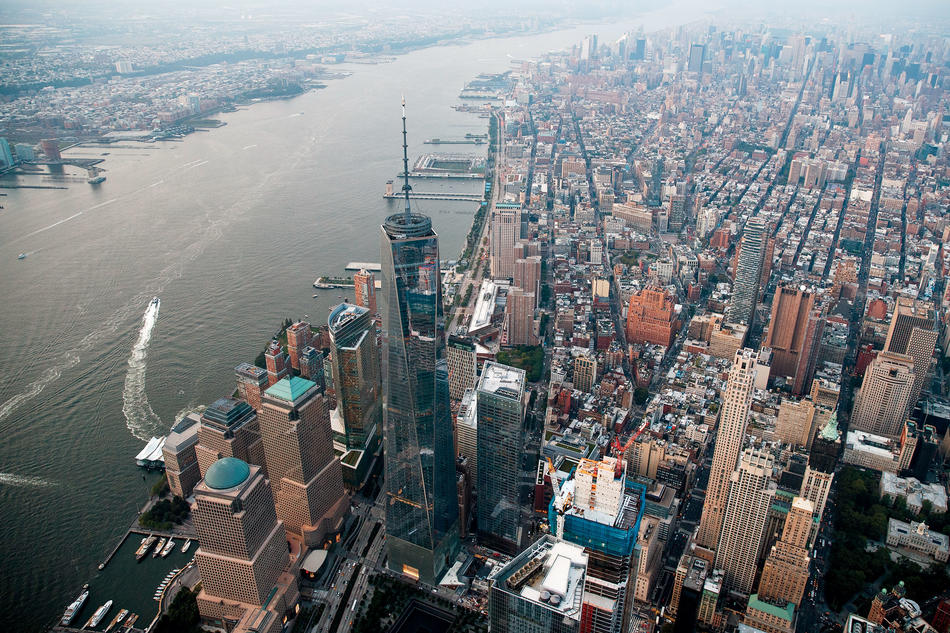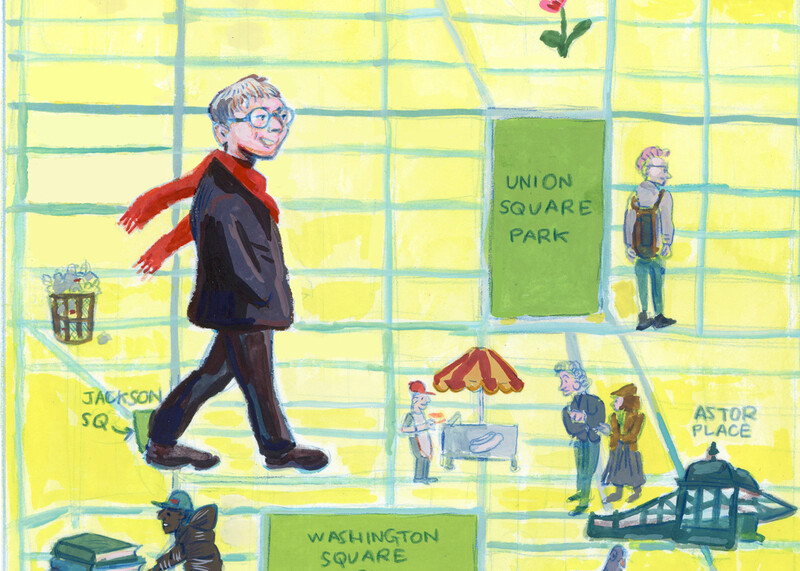Justin Davidson ’90GSAS, ’94SOA has spent a decade writing about art and architecture for New York magazine, and his new book, Magnetic City: A Walking Companion to New York, offers seven tours that set out to capture the “myth and magic and possibility” of the city he calls home. We asked the Pulitzer Prize–winning critic and Upper West Side resident to tell us more about some of the New York City places and spaces that have captured his imagination.
Lower Manhattan
The corner of South and Fulton Streets in Lower Manhattan is one of the most evocative in New York. In the early nineteenth century, the six-story building at 92 South Street was the Fulton Ferry Hotel. It was eulogized by New Yorker writer Joseph Mitchell in his 1952 essay “Up in the Old Hotel.” In Mitchell’s time, the building was home to Sloppy Louie’s, a greasy spoon that was a legendary hangout for workers from the Fulton Fish Market. The market and the restaurant are long gone, but the dusty, empty hotel rooms are pretty much still as Mitchell found them, in a state of almost sacramental decay.
South Bronx
The South Bronx is certainly ready to be rediscovered, and the art deco apartment buildings on the Grand Concourse are testament to a previous generation’s dreams of future prosperity. With its aquatic-themed mosaics, wavy façade, and phantasmagorical murals, the Fish Building at 1150 Grand Concourse is an architectural essay on happiness. Not many buildings in New York express such random joy.
Upper West Side
Riverside Drive was once a boulevard of mansions, and the Rice mansion at the southeast corner of Riverside and West 89th Street is one of the few that has survived. It’s now a yeshiva, but in the early 1900s it was the home of a very accomplished family. Isaac Rice 1880LAW was a lawyer, composer, and chess player. His wife, Julia, a community activist, campaigned against noise pollution. She founded the Society for the Suppression of Unnecessary Noise and even hired Columbia students to count tugboat toots on the Hudson River. The Rices raised six kids, one of whom became an aviatrix and another of whom sailed around the world. They were passionate advocates, idealistic eccentrics, and earnest participants in the city’s cultural life. They seem perfectly emblematic of the restless energy of New York’s Jewish bourgeoisie and the spirit of the Upper West Side.




